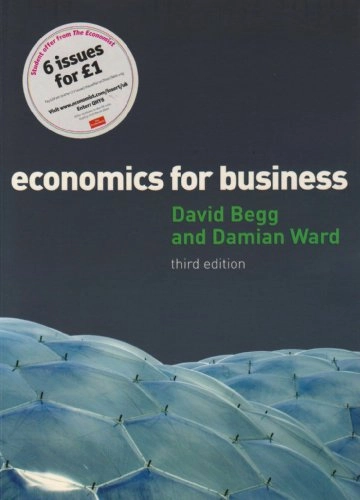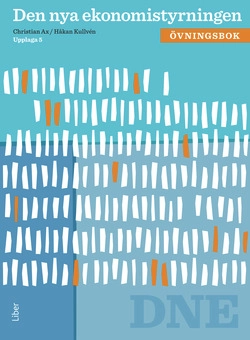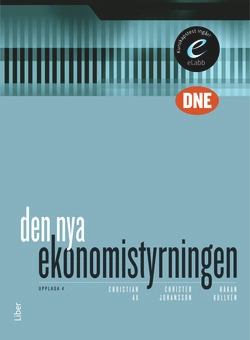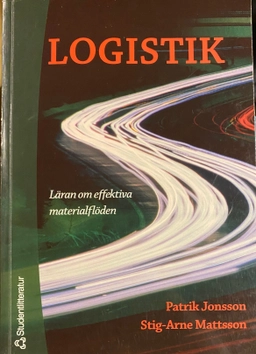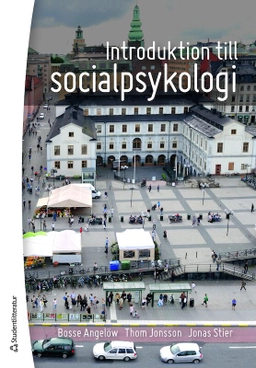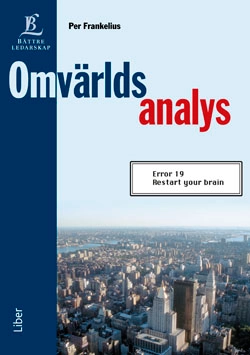Preface to the third edition
Acknowledgements
1 The economic policy consensus 1
Introduction
1.1 The economic policy consensus 2
1.2 Why policy changed
1.3 Implications for the future
1.4 Criticisms of the new consensus
1.5 Will the consensus last?
Summary
Questions for discussion
Exercises
Further reading
2 What makes nations grow?
Introduction
2.1 Trends in economic growth
2.2 Growth theories
2.3 Human welfare and sustainable growth
2.4 Policy prescriptions for growth
2.5 Conclusions
Summary
Questions for discussion
Exercises
Further reading
Appendix 2.1: The economics of the new economy
Part I The market system and competition
3 The market system in action
Introduction
3.1 The market system
3.2 The role of prices
3.3 Movements in demand and supply
3.4 The role of traders and arbitrage
3.5 The efficiency of the market system
3.6 The free market system in social context
3.7 Conclusions
Summary
Questions for discussion
Exercises
Further reading
4 Market demand and the pricing decision
Introduction
4.1 What is a ‘rational’ consumer?
4.2 Deriving the market demand curve
4.3 Elasticities of demand
4.4 Estimating the demand function
4.5 Price elasticities and the pricing decision
4.6 Conclusions
Summary
Questions for discussion
Exercises
Further reading
5 The firm in a competitive market
Introduction
5.1 Profit maximisation
5.2 Rules for maximising profit
5.3 Cost structure of the firm
5.4 The transaction costs approach
5.5 From cost structure to supply curve
5.6 Conclusions
Summary
Questions for discussion
Exercises
Further reading
6 The economics of market power
Introduction
6.1 Firm size
6.2 The economics of market power
6.3 How to sustain monopoly power
6.4 Market power with few firms – the case of oligopoly
6.5 Conclusions
Summary
Questions for discussion
Exercises
Further reading
Case study 6.1: The diamond cartel
7 Competition policy, privatisation and regulation
Introduction
7.1 The case for competition
7.2 Competition policy
7.3 Privatisation
7.4 Regulation
7.5 Conclusions
Summary
Questions for discussion
Exercises
Further reading
8 Government intervention and the market system
Introduction
8.1 Income distribution and the equity–efficiency trade-off
8.2 Market failures
8.3 Government intervention
8.4 Government failure
8.5 Conclusions
Summary
Questions for discussion
Exercises
Further reading
9 Business and the environment
Introduction
9.1 Economic growth and the environment
9.2 Environmental policies
9.3 Policy instruments: design and effect
9.4 Impact on business
9.5 Conclusions
Summary
Questions for discussion
Exercises
Further reading
10 Hiring labour and the investment decision
Introduction
10.1 The hiring decision
10.2 The investment decision
10.3 Conclusions
Summary
Questions for discussion
Exercises
Further reading
Part II The macroeconomic framework
11 Aggregate supply, aggregate demand and the price level
Introduction
11.1 How is gross domestic product (GDP) calculated?
11.2 Potential GDP, actual GDP, and GDP at purchasing power
parity (PPP)
11.3 The aggregate supply (AS) curve
11.4 Aggregate demand (AD) and money
11.5 Conclusions
Summary
Questions for discussion
Exercises
Further reading
Appendix 11.1: The money supply process
12 Price stability and central banks
Introduction
12.1 What is price stability?
12.2 Deviation from price stability 1: inflation
12.3 Deviation from price stability 2: deflation
12.4 Benefits of price stability
12.5 Central banks and institutional reform
12.6 Price stability and exchange rate anchors
12.7 Is inflation dead?
12.8 Conclusions
Summary
Questions for discussion
Exercises
Further reading
13 Understanding interest rates and monetary policy
Introduction
13.1 Which interest rate?
13.2 What determines interest rates?
13.3 Interest rates and economic activity
13.4 Monetary policy and interest rates
13.5 The design of monetary policy
13.6 Conclusions
Summary
Questions for discussion
Exercises
Further reading
Case study 13.1: Taylor’s rule for monetary policy
14 Unemployment and the labour market
Introduction
14.1 Facts about unemployment
14.2 Supply-side approach and the market mechanism
14.3 Short-run versus long-run perspectives
14.4 The importance of demand
14.5 Technology, productivity and unemployment
14.6 Labour market policies
14.7 Conclusions
Summary
Questions for discussion
Exercises
Further reading
Appendix 14.1: Unemployment and inflation – the Phillips curve
15 Fiscal policy, budget deficits and government debt
Introduction
15.1 Counter-cyclical fiscal policy
15.2 The limits of fiscal activism
15.3 Public debt and ‘crowding out’
15.4 Fiscal policy in Europe
15.5 Conclusions
Summary
Questions for discussion
Exercises
Further reading
Appendix 15.1: The sustainability of debt
16 Business fluctuations and forecasting
Introduction
16.1 Business fluctuations – the facts
16.2 What causes fluctuations?
16.3 Business fluctuations and growth
16.4 Forecasting the business cycle
16.5 Macro-forecasts and the firm
16.6 Conclusions
Summary
Questions for discussion
Exercises
Further reading
Part III The global economy
Introduction to Part III
17 Foreign trade: patterns and policy
Introduction
17.1 Trends in global trade
17.2 Explaining the gains from international trade
17.3 Quantifying the gains from trade
17.4 Trade policy and protection
17.5 What determines comparative advantage?
17.6 Conclusions
Summary
Questions for discussion
Exercises
Further reading
Case study 17.1: China and the WTO: the effects of
trade liberalisation
18 Capital flows and foreign investment
Introduction
18.1 Capital flows
18.2 Basic model
18.3 Foreign direct investment and multinationals
18.4 Effects of foreign investment
18.5 Conclusions
Summary
Questions for discussion
Exercises
Further reading
19 Labour migration
Introduction
19.1 Recent trends
19.2 Effects of migration – the basic model
19.3 Migration, public finances and jobs
19.4 Conclusions
Summary
Questions for discussion
Exercises
Further reading
20 The balance of payments: what it is and why it matters
Introduction
20.1 What is the balance of payments?
20.2 Balance of payments problems
20.3 How to correct a balance of payments imbalance
20.4 Conclusions
Summary
Questions for discussion
Exercises
Further reading
21 Coping with exchange rates
Introduction
21.1 How exchange rates work
21.2 Exchange rate theory
21.3 Capital flows and exchange rate volatility
21.4 Strategies for coping with exchange rate risk
21.5 Conclusions
Summary
Questions for discussion
Exercises
Further reading
Appendix 21.1: The global foreign exchange market
22 Exchange rate regimes and the euro
Introduction
22.1 The global exchange rate system
22.2 Float
22.4 Establishing a single currency – the euro
22.5 Conclusions
Summary
Questions for discussion
xercises
Further reading
Appendix 22.1: Exchange rate regimes – a brief history
Index
Åtkomstkoder och digitalt tilläggsmaterial garanteras inte med begagnade böcker
